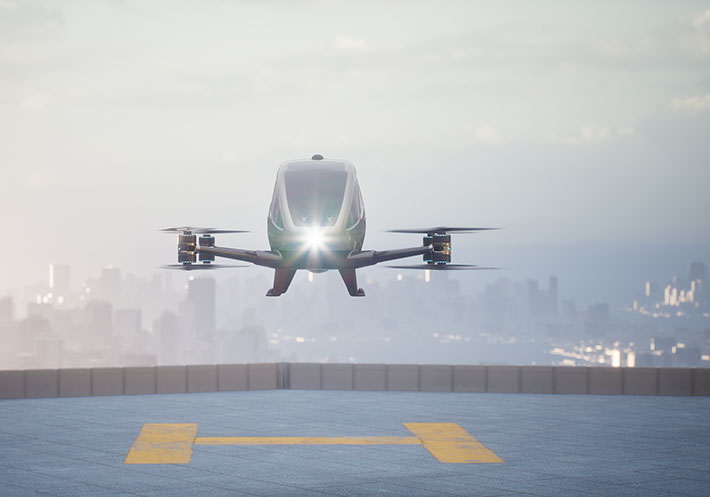
Vertiport Design and Development
A new ASTM International standard supports the design of civil vertiports and vertistops. The standard (F3423) is the result of a five-year effort by ASTM’s unmanned aircraft systems committee (F38).
A vertiport is a section of land, water, or structure intended for either manned or unmanned vertical takeoff and landing of aircraft, along with the associated buildings and facilities. A vertistop has the same geometry and airspace as a vertiport but no fueling, defueling, scheduled maintenance, scheduled repairs, or storage of aircraft is permitted. A vertistop facility is meant for the discharge of passengers or cargo only. These structures fall under the category of advanced air mobility infrastructure (AAM).
According to ASTM International Fellow Jonathan Daniels, the newly published F3423 will provide scalable specifications to guide states and municipalities in the development process of their AAM infrastructure. “Everyone involved in the development and implementation of AAM transportation, and its supporting infrastructure will find this standard extremely helpful,” says Daniels. This new standard is the foundation for additional working groups supporting automated vertiports and connections through the vertiport supplementary data service provider (SDSP) work item.
“The challenge in developing this standard was in balancing safety with practicality”, says Rex Alexander, ASTM International member and working group volunteer. “Without empirical aircraft performance data to rely on, the team’s goal was to develop a practical standard as a starting point that is not only safety centric but provides municipalities with a common-sense path forward. “
To purchase standards, contact ASTM International customer relations (tel +1.877.909.ASTM; sales@astm.org).
U.N. Sustainable Development Goals Supported:



 SN Home
SN Home Archive
Archive Advertisers
Advertisers Masthead
Masthead RateCard
RateCard Subscribe
Subscribe Email Editor
Email Editor